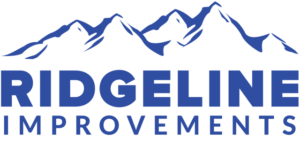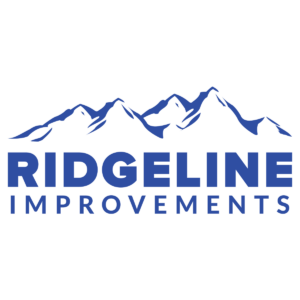Renovating your kitchen can be exciting, but you have to approach it with careful planning and consideration.
Mistakes in the kitchen renovation process can lead to costly fixes and dissatisfaction with the end result.
To help you navigate this process smoothly, our experts at Ridgeline Improvements are here to go over the most common kitchen renovation mistakes to avoid:
Underestimating the Budget
One of the most common pitfalls in kitchen renovations is underestimating the budget required for the project.
When planning your kitchen remodel, you need to account for not only the obvious expenses like materials and labor but also for unexpected costs that may arise during the renovation process.
To avoid this mistake, thoroughly research the costs associated with your kitchen renovations and add a buffer of at least 10-20% to accommodate any unforeseen expenses.
At Ridgeline Improvements, we understand the importance of budgeting accurately for kitchen renovations. Click here to get a quote and start planning your kitchen remodel today.
Ignoring the Kitchen Workflow
The kitchen workflow is an important part of any kitchen remodel. It includes things like layout efficiency, appliance placement, and traffic flow. Ignoring any of these aspects can lead to a dysfunctional kitchen despite how good it looks.
Inefficient Layouts
An inefficient layout can waste space in your kitchen and make it difficult to move around.
It can also hinder accessibility to important areas like the sink, stove, and refrigerator, disrupting productivity in the kitchen.
Appliance Placement
Where you place your appliances can also affect your kitchen’s workflow. Placing them haphazardly can make your kitchen inefficient.
For example, placing your fridge too far away from the cooking area is inconvenient, while improperly placing your dishwasher can make loading and unloading difficult.
Traffic Flow
High-traffic areas should be kept clear of obstacles to prevent congestion, especially in open-plan kitchens where the space serves multiple functions.
Failure to account for traffic flow can result in a cramped and chaotic space, taking away from the kitchen’s overall usability and comfort.
Choosing Aesthetics Over Functionality
During a kitchen renovation, it’s easy to get caught up in stylish designs and eye-catching materials.
However, prioritizing aesthetics over functionality can lead to long-term dissatisfaction and frustration.
Here are some common kitchen mistakes to avoid when it comes to choosing aesthetics over functionality:
Trendy Designs
Trends come and go. What’s in style today for kitchens might be outdated tomorrow. Instead of solely focusing on what’s popular, consider timeless design elements that you can work around as your tastes change.
High Maintenance Materials
While certain materials may look stunning, they might require extensive maintenance to keep them looking good.
Before choosing materials, consider your lifestyle and maintenance preferences. Go for materials that not only look good but are also practical and easy to maintain.
Ignoring Ergonomics
Many people don’t think about ergonomics when designing a kitchen, but it can impact the comfort and efficiency of your space. This can also lead to unnecessary strain and fatigue.
Make sure your kitchen layout prioritizes ergonomics, such as the height of the countertops, placement of appliances, and ease of movement throughout the room.
Inadequate Storage Planning
Insufficient storage space is a common complaint in many kitchens, often resulting from poor planning during the renovation phase.
Overlooking the importance of adequate storage can lead to cluttered countertops, difficulty in accessing essential items, and a lack of organization.
To increase storage space in your kitchen, think about your specific needs and lifestyle. Consider incorporating a mix of cabinets, drawers, pantry solutions, and innovative storage accessories to maximize every inch of available space.
Overlooking Lighting Design

Many people overlook lighting when it comes to designing their kitchen, yet it is crucial in creating a functional and inviting space.
Poor lighting can make tasks like chopping vegetables or reading recipes difficult, while well-planned lighting can enhance the functionality of your kitchen.
When designing your kitchen lighting scheme, consider combining ambient, accent, and task lighting to create layers of illumination that cater to different activities and moods. Incorporate windows, skylights, or light tubes to maximize natural light.
Not Factoring in Ventilation
Not factoring in ventilation is a critical oversight in kitchen renovations that can lead to poor indoor air quality, lingering odors, and potential health hazards.
Proper ventilation is essential for removing cooking byproducts such as smoke, grease, and moisture, which can accumulate and compromise air quality over time.
When planning your kitchen renovation, consider the size and layout of the space, as well as the type of cooking activities you typically engage in.
A properly sized and positioned range hood or exhaust fan is essential for effectively capturing and exhausting cooking fumes and moisture to the outdoors.
Not Considering Future Resale Value
When you’re planning a kitchen remodel, it’s important to also consider the future resale value of your home.
While you may enjoy your design choices, how you renovate your kitchen can impact your home’s ROI (return on investment).
Overly Personalized and Niche Designs
While injecting personal style into your kitchen can make it feel unique, overly personalized designs may limit the appeal to potential buyers.
Choosing niche styles or highly specific themes might alienate buyers, potentially reducing the market appeal of your home when it comes time to sell.
Low-Quality Materials
Cutting corners with low-quality materials might initially seem like a cost-effective solution, but it can backfire in the long run.
Inferior materials not only detract from the aesthetic and functional value of your kitchen but can also lead to costly repairs or replacements down the line.
Ignoring Market Trends
Trends in kitchen design and functionality evolve over time. Ignoring current market trends may result in a kitchen that looks outdated or lacks sought-after features when you eventually put your home on the market.
Staying informed about popular styles, materials, and technological advancements can help ensure your kitchen remains attractive to potential buyers in the future.
Not Hiring Qualified Professionals
While DIY or hiring unqualified individuals may seem cost-effective, it often leads to more significant expenses down the line.
Relying on unqualified labor can result in shoddy workmanship, subpar installations, and potential safety hazards.
In contrast, seasoned professionals bring invaluable experience, ensuring that your renovation is executed smoothly and up to code.
Qualified professionals possess a deep understanding of structural considerations, electrical wiring, plumbing intricacies, and design nuances.
They can deal with unforeseen challenges, saving you both time and money in the long run.
Also, reputable professionals typically offer warranties on their work, providing you with added peace of mind.
By entrusting your kitchen renovation to skilled experts, you not only safeguard your investment but also enhance the overall quality and longevity of your revamped space.
Avoid Kitchen Mistakes with Ridgeline Improvements
When it comes to kitchen renovations, steering clear of common pitfalls can make all the difference in achieving a successful outcome.
At Ridgeline Improvements, we understand the intricacies involved in transforming your kitchen into a functional and aesthetically pleasing space.
With our expertise and attention to detail, we ensure that your renovation journey is smooth and hassle-free.





